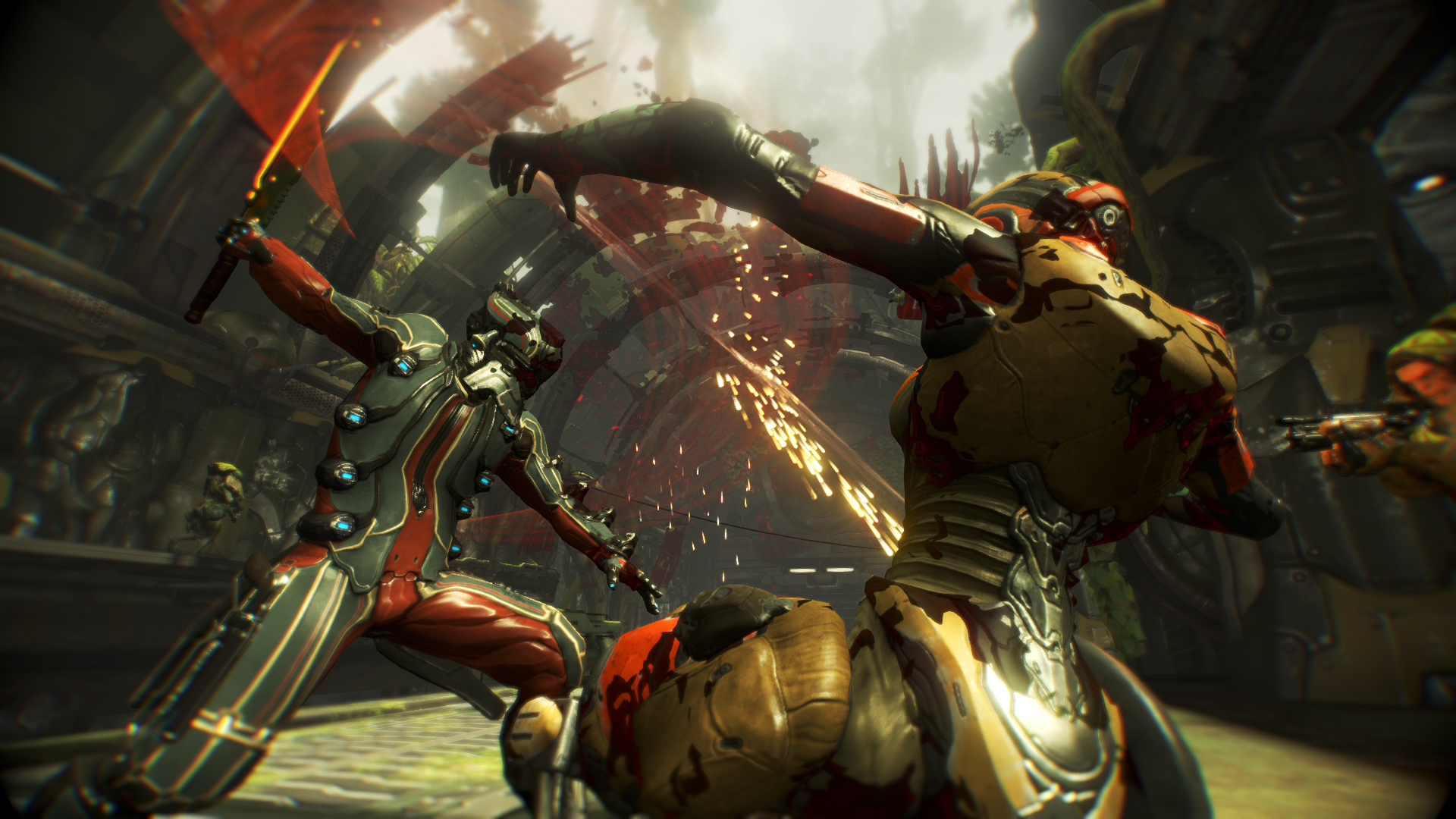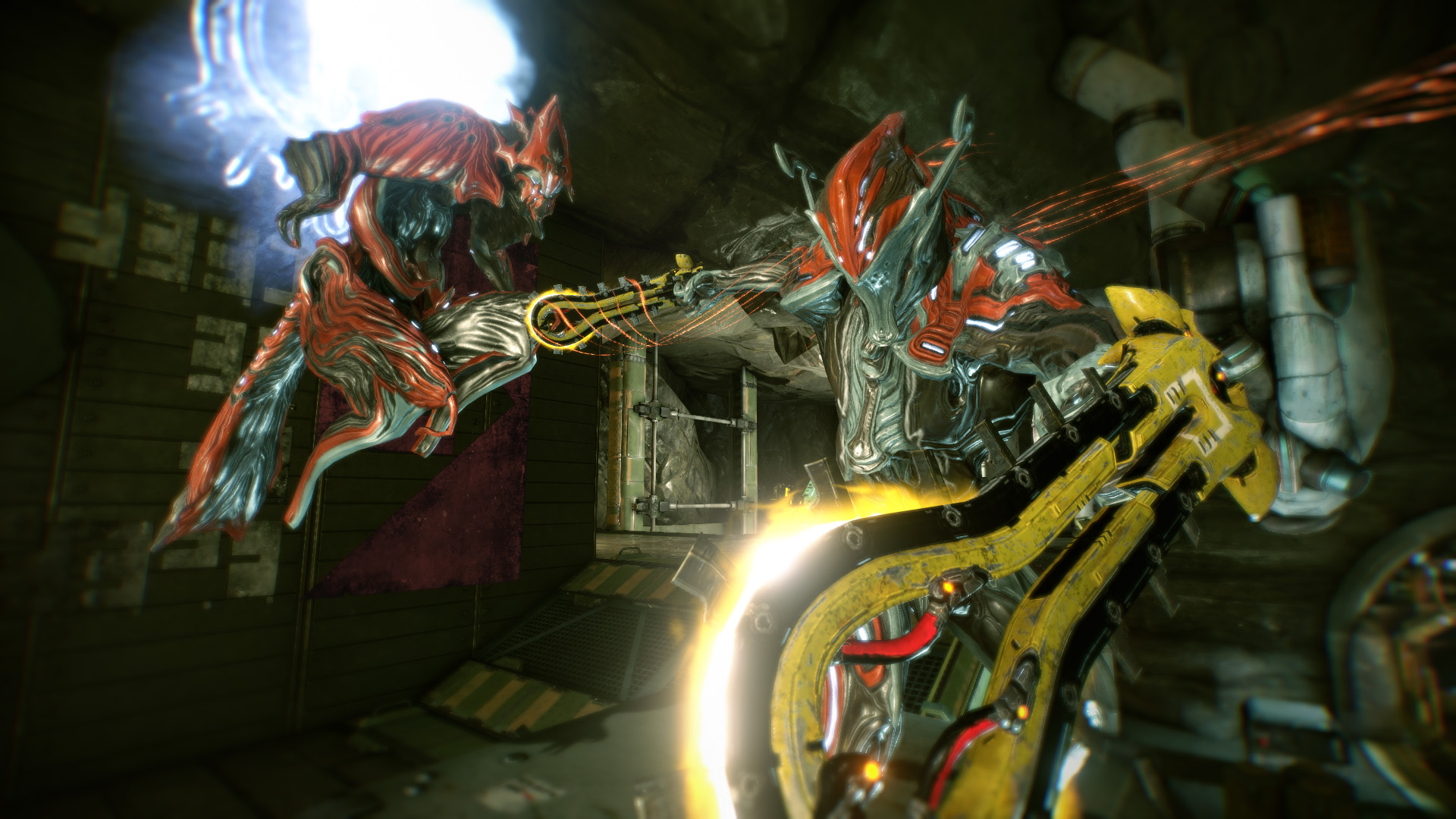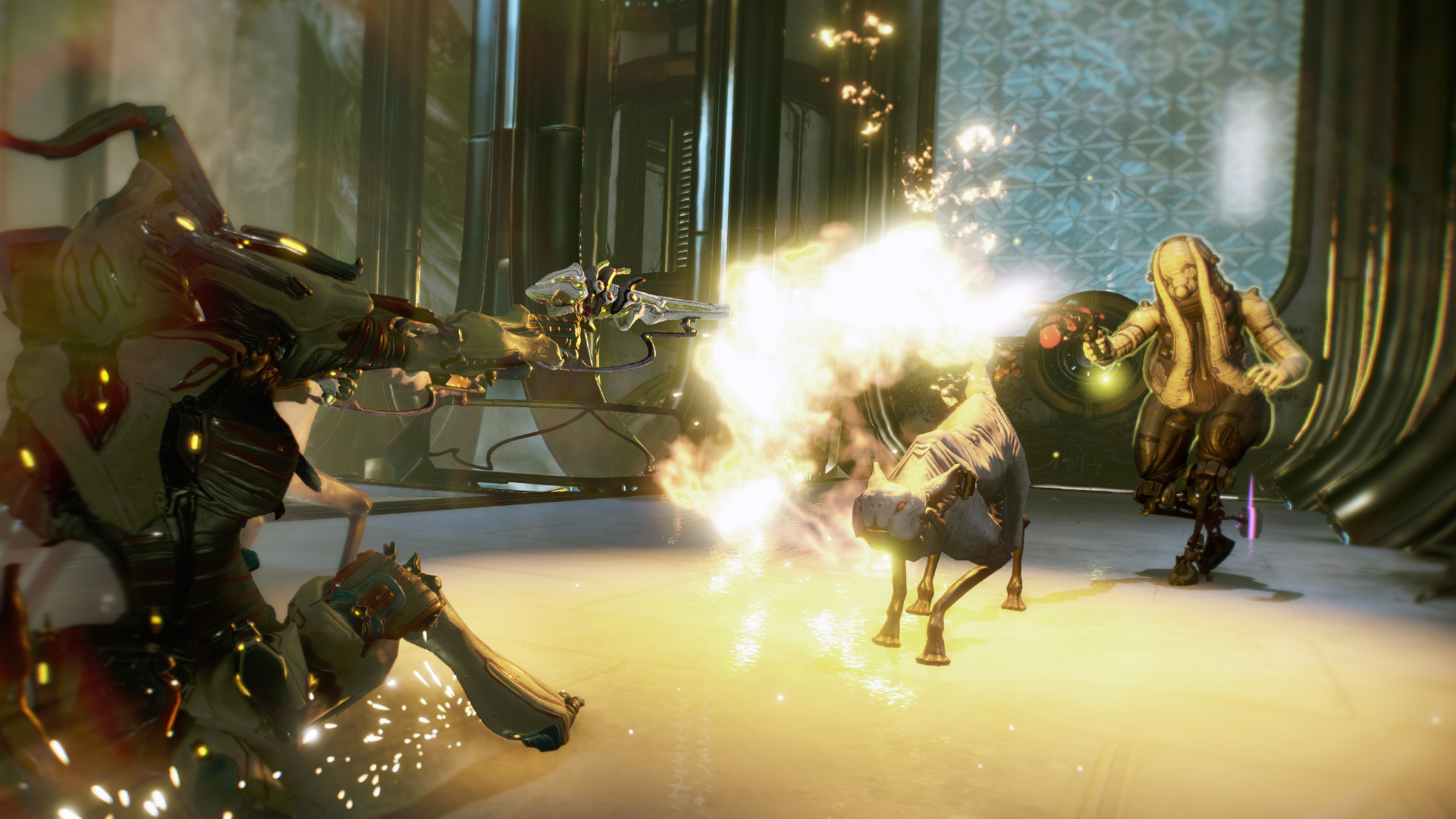Warframe might be gaming’s best comeback story. Released as a free-to-play title in 2013, the game was dismissed as a visually arresting, yet hollow, also-ran. The PlayStation 4 version of the game has a disappointing Metacritic score of just 64, making it the fifth-worst-reviewed PS4 game of 2013.
That should’ve been the end of that. But it wasn’t. Digital Extremes continued to expand the game while launching it on new platforms. Today, Warframe is often among Steam’s top 10 most-played games, hitting a peak of 129,000 simultaneous players this summer — on par with Grand Theft Auto V.
I could now tell you how Digital Extremes has polished the title, refining a half-hearted release into a more cohesive, slick package, one that has fans salivating for more. But that’s not quite true. Warframe has improved, but polish and refinement aren’t the reason for its success. Instead, the game has evolved into a bizarre combination of concepts tied together by sheer audacity. As Mary Berry would say in an alternate universe, it’s a bit of a mess. But the gameplay is there.
It’s broken …
Most games chase elegance. They seek to become a carefully tuned, finely balanced loop. Bungie is headmaster of this game design school. It builds the gaming equivalent of a jet engine. Every component is carefully considered and weighed, resulting in a sleek, gleaming game that shines with its creator’s intent.
The there’s Warframe. Digital Extremes, the game’s developer, has a philosophy better aligned with the guy who launched himself in a homemade rocket to prove the Earth is flat. The developers don’t seem interested in careful consideration of design. They don’t want to hear why an idea might not work. They just want you to scream, ‘oh my god…did you see that!?’ And once they’ve done that, they’ll act modest and wonder what all the fuss is about.

The result is an intense and confusing game. Warframe throws a cartload of stuff at players from the start. Within the first 10 hours, you’ll earn 30 different kinds of currency. You’ll build a heat sword. You’ll grow a space-dog. You’ll name it Bubbles. You’ll watch it shred enemies in half. You’ll strap a jet pack to yourself and fight enemies in deep space because, hey, why the hell not?
This jumble of ideas can be overwhelming, and it’s certainly not what most game critics would call “good.” Yet fans keep coming back for more.
It’s a janky lump of a game, too. Consider Cetus. It’s the game’s first major hub area, like Stormwind in World of Warcraft, or the Tower in Destiny. It looks great, but Warframe’s game engine apparently has trouble smoothly rendering tens of players in one space. Digital Extremes’ solution? Nothing. Players warp back and forth. They float through the air. Textures and geometry pop-in on players just a few feet away.
Bungie would never allow such things in Destiny, and if those bugs did appear, the developer would act quickly to squash them with extreme prejudice.
… but it’s awesome
And yet, Warframe is the better game. Not because its sleek, or elegant, or balanced. It gives all those concepts the middle finger in the name of fun.
The Warframes, weapons, and companions you can build and equip aren’t balanced. The modifications you can enhance them with are absurdly unbalanced. Properly configuring your loadout can mean the difference between struggling on a mi-tier mission against level 10 opponents and obliterating the hardest game’s most difficult content. Abusing the game’s numerous, poorly explained systems to construct an ungodly machine of death isn’t a flaw. It’s the entire point.
With a more polished game, like Destiny 2, this wouldn’t work. The developers would’ve built the game with an assumption that elegance, balance, and technical perfection are ideal. That means a focus on competitive gameplay. That means extremely difficult end-game content. That means finding ways to rank every player against others, even if they mostly play alone.
There’s no hint of this “keeping up with the Jonses” attitude in Warframe. Instead, it focuses on cooperative play. There are few restrictions on who can play with whom, and everyone is rewarded for success.
Yes, that means a new player can team up with a 500-hour veteran and tackle tough missions for incredible rewards. A more balanced game wouldn’t allow that. Warframe doesn’t care.
Letting fun win
The entire battle royale genre is built on a similar disregard for established rules. For years, competitive multiplayer games built on a foundation of assumptions. Two teams. An equal start. Balanced weapons. Everyone knew those rules made the best multiplayer games – until Playerunknown’s Battlegrounds shredded the rulebook.
Warframe’s innovation is no different. It throws out what everyone assumed a good online shooter should look like and builds its own vision, one that cuts through assumptions like a heat sword through Grineer armor. The game’s success is not a fluke. It’s a vision of gaming’s future.









